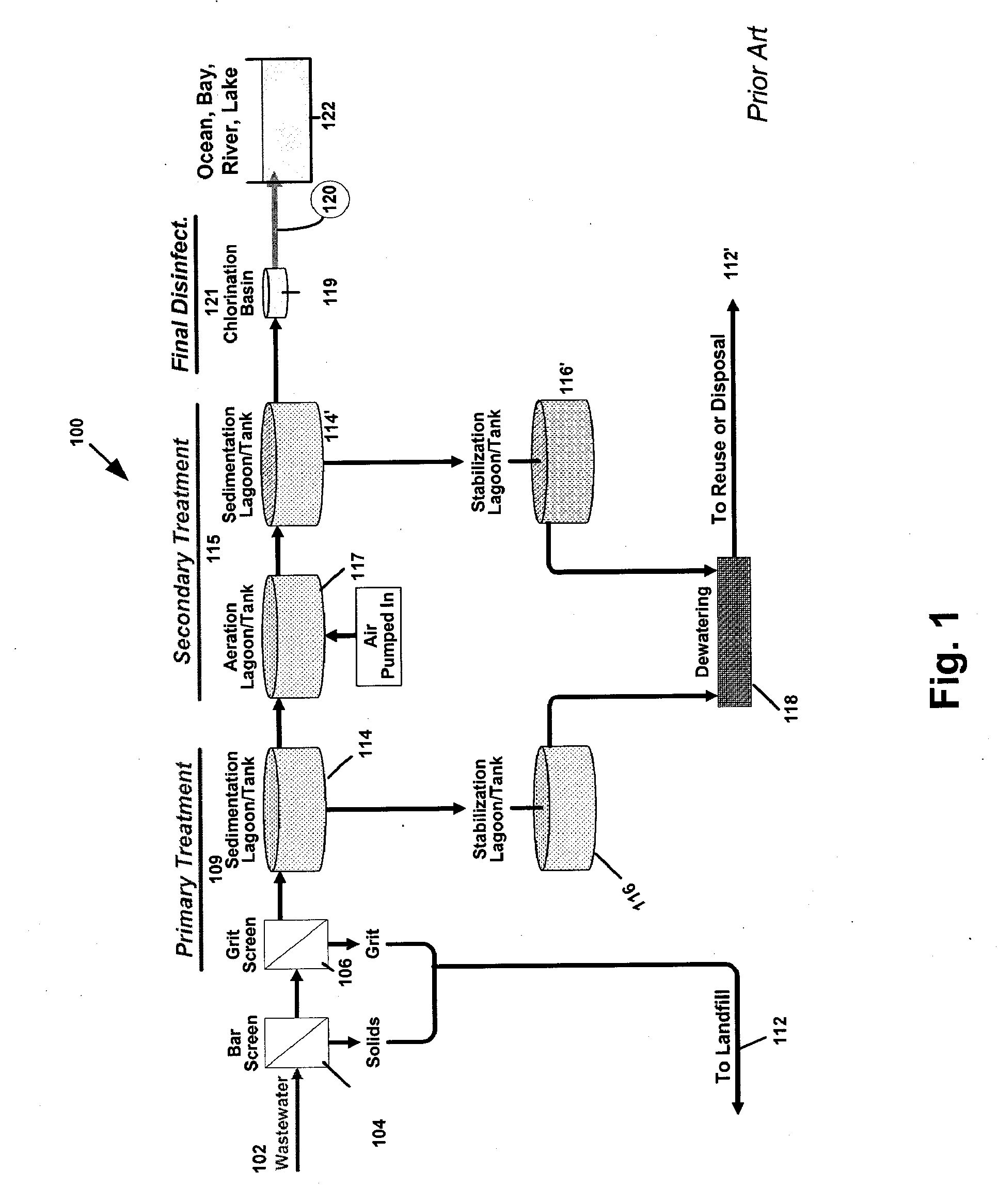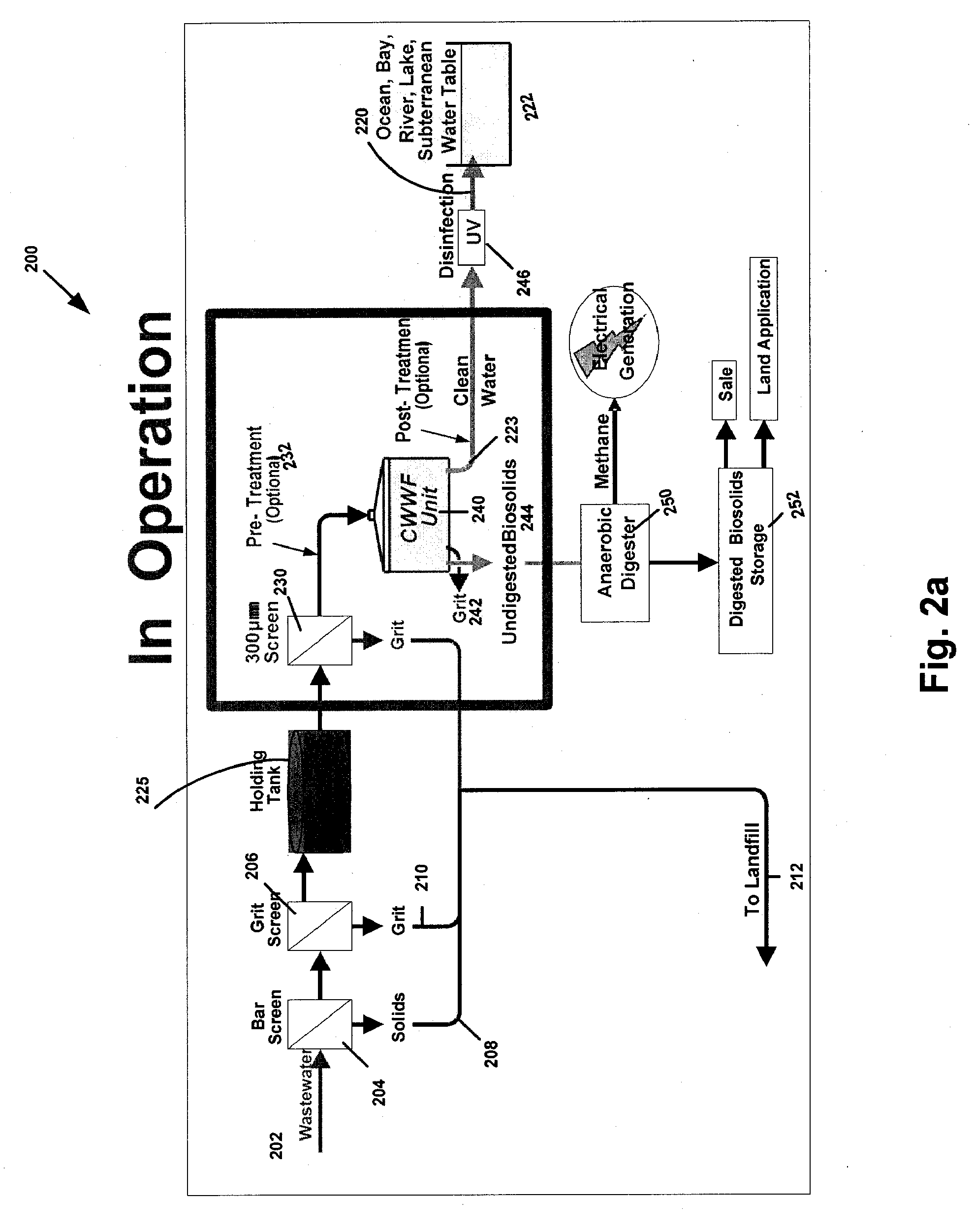Centrifugal Fluid Filtration Devices, Systems and Methods
a centrifugal fluid and filtration device technology, applied in centrifuges, separation processes, filtration separation, etc., can solve the problems of increasing energy dilemma, salt water, and requiring an expensive and energy-intensive desalination process, so as to reduce the cost, less space, and less time
- Summary
- Abstract
- Description
- Claims
- Application Information
AI Technical Summary
Benefits of technology
Problems solved by technology
Method used
Image
Examples
Embodiment Construction
[0039]For purposes of illustration of the concepts of the invention, the various features are discussed with respect to wastewater treatment. However, those skilled in the art will appreciate that the teachings can be applied to other industries such as pharmaceutical and food processing. Commercial applications for this invention are numerous and include, but are not limited to: drinking water and wastewater treatment for municipalities; non-community wastewater systems and housing developments; and wastewater treatment for commercial business developments, condominiums, malls, hotels / motels, office buildings, hospitals, resorts, and government and military installations. Additional applications may include, but are not limited to, isolation, separation, purification, removal, recovery, and / or concentration of biological components in the pharmaceutical and biotechnology industries. The device may also be used for water clean-up in power plants; and water and wastewater clean-up in...
PUM
| Property | Measurement | Unit |
|---|---|---|
| speed | aaaaa | aaaaa |
| antifouling effect | aaaaa | aaaaa |
| energy | aaaaa | aaaaa |
Abstract
Description
Claims
Application Information
 Login to View More
Login to View More - R&D
- Intellectual Property
- Life Sciences
- Materials
- Tech Scout
- Unparalleled Data Quality
- Higher Quality Content
- 60% Fewer Hallucinations
Browse by: Latest US Patents, China's latest patents, Technical Efficacy Thesaurus, Application Domain, Technology Topic, Popular Technical Reports.
© 2025 PatSnap. All rights reserved.Legal|Privacy policy|Modern Slavery Act Transparency Statement|Sitemap|About US| Contact US: help@patsnap.com



